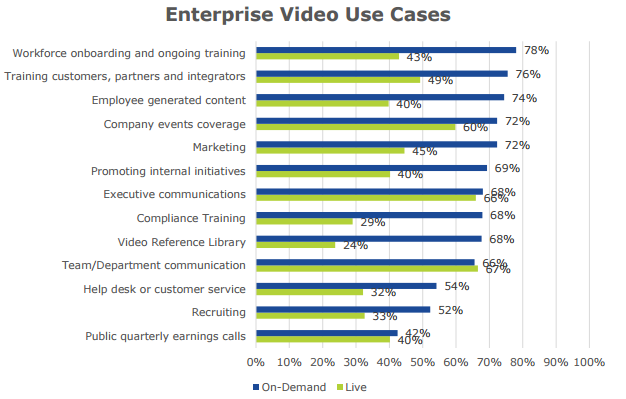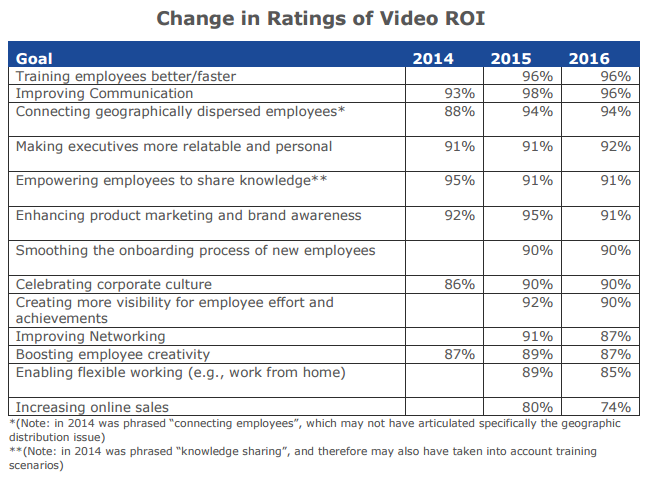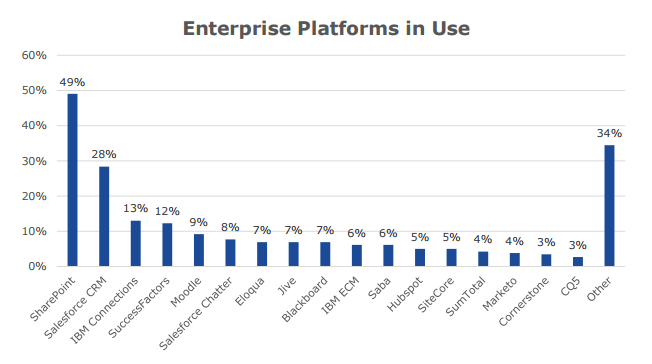How Enterprise Video Content Yields a Dramatic ROI?
The adoption of video in enterprise organizations is skyrocketing as businesses expand across a global footprint, and video enables their employees to look into the eyes of their clients and their colleagues from the other side of the world. Technavios analysts forecast the global online video platform market to grow at a CAGR of 14.88% from 2016 to 2020. Due to the storage and bandwidth size of the data, management of video content used to be burdensome in the past, but as the technology has evolved, now more and more organizations are embracing video. Gartner defines enterprise video content management as: "Software, appliances or software as a service (SaaS) intended to manage and facilitate the delivery of one-to-any, on-demand video across internet protocols."
Ron Yekutiel, CEO of Kaltura, enterprise video platform provider which has been named a "Leader" in the  Gartner Magic Quadrant for Enterprise Video Content Management 2016 report for the fourth year in a row: “Video has reached a tipping point, with 59% of enterprises having integrated video into their intranets and 42% having integrated video capabilities into social business platforms. Video helps businesses of all shapes and sizes to meet many of their business goals more easily because it is such a natural tool for any business activity that requires communication or collaboration. Any enterprise that has so far resisted putting in place an enterprise-wide video strategy risks being left behind as their video-fueled competitors start to pull ahead of the pack.”
Gartner Magic Quadrant for Enterprise Video Content Management 2016 report for the fourth year in a row: “Video has reached a tipping point, with 59% of enterprises having integrated video into their intranets and 42% having integrated video capabilities into social business platforms. Video helps businesses of all shapes and sizes to meet many of their business goals more easily because it is such a natural tool for any business activity that requires communication or collaboration. Any enterprise that has so far resisted putting in place an enterprise-wide video strategy risks being left behind as their video-fueled competitors start to pull ahead of the pack.”
Although the vast majority of the vendors in the market develop video delivery to people who are external to enterprises, the highest demand from organizations is for vendors that perfectly support internal delivery as the video capabilities can blur the line between the next cubicle and the next continent, when it comes to collaboration and communication. Gartner’s consumer study, which was conducted online during July and August 2015, among 2,000 respondents in the U.S., the U.K., France, and Germany, has unveiled that today, about 22% of workers in Europe and the U.S. have access to a video library to increase or hone their skills, up from nearly zero less than 10 years ago.
Enterprise Video Use Cases
According to Kaltura’s third annual State of Enterprise Video report, an international study that examines the evolving use of video, by surveying around 500 enterprise professionals, almost three-quarters (73%) of respondents’ organizations produce more than 5 internal webcasts a year, while nearly a third produce a whopping 50 or more. In terms of use cases, the study suggests that the most popular use is the training of various kinds, followed closely by employee-generated content, company events coverage, and marketing. The chart below has been retrieved from Kaltura’s study:

Source: State of Enterprise Video report
Due to the different time zones or tight schedules, companywide communications such as all-hands meetings do not always materialize when everybody is available. Therefore, on-demand video is the best possible solution to include people who can’t attend live or simply, who want to revisit the meeting content after. Live video, on the other hand, reduces the impact of distance and the costs of travel by bringing everyone onsite for a live in-person meeting. While the live video is not used nearly as broadly as on-demand video, the use case of team/department communication seems to be an exception according to the figure above.
The study cites that a little under half of the respondents spend between 30 minutes and 5 hours a month watching the video, compared to less than 30 minutes a month creating a video. Moreover, almost half (45%) reported that they have created more video in 2016 than in 2015.
Return on Investment
In the organizations that embrace online video platforms, the business outcomes are significant. From increasing productivity to leveraging employees’ work-life balance and engagement, video collaboration and content delivery helps enterprises in so many ways. Instead of burning their employees out with a myriad amount of business travel per year, with intuitive collaboration technologies, employees can stay on the top of what’s happening in the workplace without having to sacrifice work-life balance. In return, organizations reduce the risk of losing talent as the study shows that 81 percent of engaged employees intend to stay with their current employers which leads to 22 percent higher profits for the company. In addition, seasoned human resources professionals also choose video conferencing as a preferred communications tool due to the advantages in staffing, training, and flexible work environments.
Cisco, for instance, believes that video collaboration plays a huge role in helping them meet the challenges of managing their global workforce as more than 40 percent of their employees work outside the United States. Faced with escalating travel costs, as well as lost productivity due to travel, Cisco expanded their use of collaboration tools as an alternative to travel. As a result, the company saves $250 million in travel costs per year by using video. In addition, 2013 Cisco Global Young Executives’ Video Attitudes Survey of 1300 managers indicated that 87 percent believe video has a significant and positive organizational impact.
Referring back to Kaltura’s recent study, over 90% of respondents saw at least some value in the use of video in nearly every one of the listed organizational goals. More than half considered video very valuable for four of the goals: improving communications, training employees better/faster, connecting geographically dispersed employees, and enhancing product marketing and brand awareness. Since this survey marked the third annual study in this regard, Kaltura compared the similar answers they received in 2014 and 2015 to prove that the value of video is a stable trend over time:

Source: State of Enterprise Video report
Integration
Although video content management serves a wide range of existing and new use cases, the platforms are often used by being integrated into their systems. Typically, while the most popular system that organizations are integrating video into is the company intranet, social business platforms, and an enterprise LMS are also popular use cases. When Kaltura asked participants to its survey for specifics about which enterprise platforms are used in their companies, over half of the respondents were using Microsoft SharePoint. Salesforce CRM comes in second place, with a share of around 28 percent.

Source: State of Enterprise Video report
Considering the market shifted toward a complete offering in 2016, Gartner’s analysists Whit Andrews and Adam Preset, who are the authors of the Gartner Magic Quadrant for Enterprise Video Content Management 2016 report, expect other factors, such as combinations of videos with process flows and games to shift the direction of the market in the long run. Another prediction was cited in the report that wearable video can expand from law enforcement to many field occupations like transportation, logistics, service, and sales in the wake of accelerating demand for Internet of Things. When it comes to purchasing decision criteria, usability and an understanding of particular business needs are the primary factors followed by attractive pricing.
Although in this article we discussed the use of video within organizations, video also provides a way to reach not only employees but prospects and existing customers. eMarketer, for instance, expects US digital video ad spending will see double-digit growth annually through 2020. Research firm Advertiser Perceptions found that 72% of marketers planned to invest those digital video ad dollars with YouTube in the next 12 months. Since less competition is established for video content than a text article, an SEO-friendly video on YouTube is 52 times more likely to show up on one of the Google search result pages. More importantly, a study by eyeviewdigital.com shows that using video on landing pages can increase conversion by 80%.
Video content has expanded its footprint in enterprise and become a very prominent factor for many use cases such as improved productivity, better work-life balance, flexibility, training opportunities, and so on. Outside of enterprises, though, the combination of this on-going trend with the technological progress has enabled businesses to produce videos for advertising with even small marketing budgets. In short, video is becoming a new normal for almost every organization. Therefore, businesses need easy to use tools for video capture and platforms that can fully support integration with other existing systems so they can keep up with the rising expectations of internal and external stakeholders on the video communications.

Venus Tamturk
Venus is the Media Reporter for CMS-Connected, with one of her tasks to write thorough articles by creating the most up-to-date and engaging content using B2B digital marketing. She enjoys increasing brand equity and conversion through the strategic use of social media channels and integrated media marketing plans.